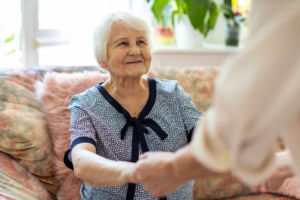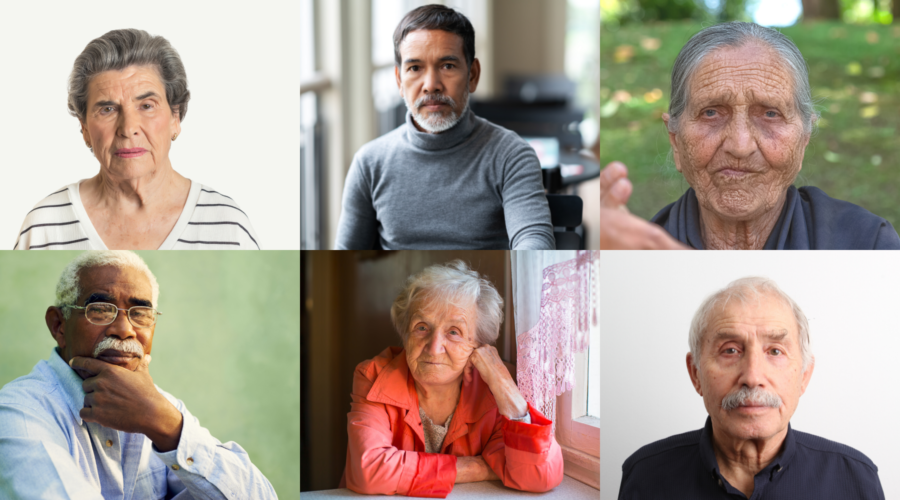The COVID-19 pandemic has sparked critical conversations around many disparities. Among them, ageism has received new attention as a pervasive issue that affects all of us somehow. But what exactly is ageism, and how does it show up specifically for the Parkinson’s community?
What is Ageism?
In March of this year, the World Health Organization put out a Global report on ageism to “fill [the knowledge] gap and underscore the need to adopt a forward-thinking, rights-based approach that addresses the underlying societal, legislative and policy structures that support long-standing assumptions about ‘age’ across the life course.” They define ageism as follows:
“Ageism refers to stereotypes (how we think), prejudice (how we feel), and discrimination (how we act) directed towards people based on their age. It can be institutional, interpersonal, or self-directed.”
Ageism is not exclusive to older people, though bias against older adults is particularly prevalent, especially in the US. Ageism begins in childhood as we process social cues to understand our social roles and values related to our age. As mentioned in the definition, ageism, like all forms of bias, functions not just between individuals but systemically through policy and social structures and within ourselves. We internalize and believe the myths of ageism, letting them affect how we see ourselves, our values, and our abilities. And ageism does not work alone. According to the report, intersections of ageism and other forms of bias like racism and ableism “compound disadvantage and make the effects of ageism on individuals’ health and well-being even worse.”

What does this mean for the Parkinson’s community?
Because our community includes a disproportionate number of older adults, the effects of ageism are incredibly harmful to the Parkinson’s community. Among many issues, ageism has been shown to lead to healthcare rationing, withholding medical therapies, and exclusion from research and clinical trials, even within conditions (like Parkinson’s) that are more prevalent in older people. Internalized ageism causes people to choose behaviors that adversely affect their health and increase their isolation, loneliness, and mental health issues.
And the intersection of ageism and ableism (discrimination and prejudice against people with cognitive or physical disabilities) sheds even more light on how this bias harms our community. In her talk on “Confronting Ageism & Ableism in the Wake of Covid”, Ashton Applewhite explains how ageism and ableism intersect, saying,
“Both are systems of belief and social practices that assign value to human beings based on assumptions about how our brains and bodies work and how that might affect what we are capable of… These systems are upheld by the belief that being non-disabled is normal and that leading meaningful lives is contingent on being youthful, able-bodied, and able-minded.”
As a progressive neurodegenerative disease, Parkinson’s causes physical ability and cognition changes over time, regardless of age. This means that most community members are subject to ageism, ableism, or both throughout their Parkinson’s journey.
What can I do about ageism?
Understanding ageism and its effects on our community can be painful and upsetting, but we are not helpless to this problem, and we are not alone in our desire to eliminate it. The World Health Organization, United Nations, and countless other organizations are taking action to change how we think about aging and how we make healthy aging a reality for all in a big way. And we can all join in to help.
As with all biases, starting with our own thoughts, language, and actions is essential. Ageism is so prevalent; you might even be reinforcing it yourself without even thinking about it. And, because stereotypes that reinforce aging are not all negative, it can sometimes be even harder to spot.
- Take an implicit bias test like this one to understand your own biases (we all have them)
- Check out the table on page 30 of the WHO’s Global report on aging for some common examples of ageist stereotypes
- Read these resources that provide communication guidelines and reframing strategies to get some ideas on how you could change your language to be more age-positive
- Join the conversation in reporting and trying to understand instances of ageism on the “Yo, is this ageist?” website
 As you recognize and change your patterns, you’ll probably start to see them in others. These observations may provide you with opportunities for conversations that can help people within your circle of influence become more age-positive, too.
As you recognize and change your patterns, you’ll probably start to see them in others. These observations may provide you with opportunities for conversations that can help people within your circle of influence become more age-positive, too.
- When confronting someone about something they are doing or saying that reinforces ageism, be careful to call out the action and not the individual. For example, it’s more productive to say, “When you say Pat is too old to be wearing that, it reinforces ageism,” as opposed to, “You are so ageist for saying that!”
- Learn about AARP’s Disrupt Aging campaign to see how they are working to change perceptions around age
- In addition to helping others change their thoughts and behaviors on a one-on-one basis, you might consider starting a consciousness-raising group
Changing your attitudes and actions and helping to positively influence your circle can have a more significant impact than you might think. But, if you want to go further, the WHO’s report lists several strategies to tackle this issue on a bigger scale by addressing policy and law, expanding educational efforts, and increasing intergenerational contact. You can also explore Ashton Applewhite’s “Old School” website, which has a wealth of resources to help you take action, including lists of campaigns and organizations you might consider getting involved with.

